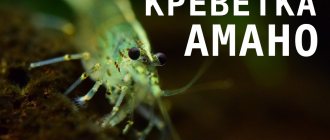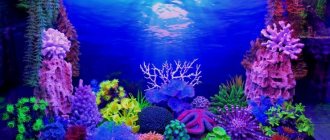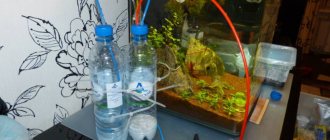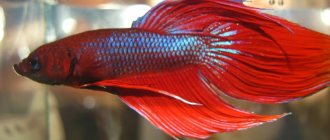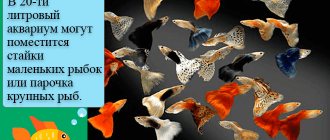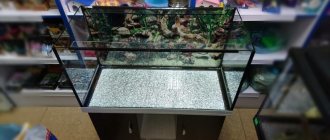Professional aquarists know who Takashi Amano is. He is a world famous Japanese aquarium designer who creates real masterpieces. Amano is a true specialist in this field who has created unique styles with mesmerizing looks. Just look at a natural aquarium that houses bright trees, evergreen shrubs, gardens, and flower beds with colorful flowers. If you are interested in these samples, then it is worth considering in detail the important features of its design style.
Activity
In 1992, his photographic publications, "The Nature of the Aquarium" and "Mizu Shizen ENO Kaiki", were translated into seven languages. He was the author of a series of books in 1994: Nature Aquarium World, which depicts aquarium fish and plants, and Aquascaping. Amano then wrote about "Aquascaping" with fresh water. In addition, he formed a unique style of decorating aquariums with plants. Amano uses Japanese gardening concepts such as "Zen" and "Wabisabi". He used Riccia fluitans and Glossostigma elatinoides as vegetation materials, and to control algae growth, he used shrimp.
Since 1975, Amano has been in the tropical rainforests of West Africa, Borneo and the Amazon. He also visited Japan's untouched forests. He captured the beauty of these places using his large format camera. In the last years of his life, the photographer gave lectures describing his photography expeditions and experiences working in nature. In addition, with an open love for the natural environment, he was a big proponent of programs that teach people to plant trees to protect the environment of planet Earth.
Takeshi Amano was a member of several organizations, including the Society of Scientific Photography, the Society of Japanese Professional Photographers, the International Environmental Association, and the Japan Advertising Photographers Association. Amano produced exotic landscape photographs, paying particular attention to freshwater plant mechanisms, caves, rocks, and pools to capture aesthetically pleasing landscapes.
Innovations in aquarium farming
In 1977, he developed a system for supplying carbon dioxide to aquariums. In the early 80s, Takashi created his own studio (rather, research (ADA) for the production of aquarium equipment. After 20 years, the company's turnover amounted to $12.2 million. In 1992, Takashi Amano's famous book “Nature Aquarium” was published World". In it, the author described aquarium fish and plants.
The guru also talked about freshwater aquascapes. He described how you can create Japanese gardens in an aquarium. In 1997, another book was published - “Aquarium. Plant paradise." In it, the author revealed the secrets of growing aquatic plants in a lush carpet using Riccia fluitans and Glossostigma elatinoides. To limit plant growth, he was the first to use shrimp in aquariums. In 2001, Amano held the first international competition among aquascaping artists and amateurs, IAPLC.
In June 2003, the Amano Corporation opened an exhibition of Takashi Amano's original works in the Natural Aquarium gallery for the winners of the competition. This exhibition became a real philosophy, originating from Zen gardens, the Japanese courtyard and even from ancient Japanese culture itself.
Takashi Amano's aquarium system uses only natural materials - living plants, fish and microorganisms. The aquarium can recreate the impenetrable jungle of the Amazon, the mangrove forests of Chanthaburi, or corners of the wild, noticed by the sensitive eye of a photographer. The aquascape philosophy celebrates the fragile beauty of nature.
Amano aquariums are like photographs come to life with its amazing natural world. His aquariums combine:
- compactness;
- thoughtful content;
- ease of use;
- beauty.
What do Amano aquariums look like?
If you look at the name, it seems that this is a kind of natural world that has been copied into a glass container. At the same time, equipment and feeding with other advanced technologies are used in minimal quantities.
It's actually simple. The natural amano aquarium shows a terrestrial nature with overgrown bushes, paths with forest windbreaks and hillocks. There may also be a clearing with boulders.
In his creation you can see a wild, unkempt and dim natural area. There are no well-kept flower beds and gardens here. Here, untouched natural beauty and the highest aquarium technology can be combined. If they are not used, then fastidious plants with such dense planting will not be able to exist.
Variety of aqua styles
It is difficult for an ignorant person to imagine that aquascape, like landscape or interior design, has its own styles that create unique aquariums. Freshwater designs include: Dutch, German, Taiwanese and natural styles:
- The Dutch style is based on a dense arrangement of spectacularly trimmed aquatic plants. The principle of the golden ratio prevails here.
- The German one combines both the surface and underwater parts of the aquarium.
- Taiwanese style very accurately emphasizes depth and conveys the features of the natural landscape.
The Forest Thicket style uses a lot of driftwood.
The Zen Garden style pays attention to creating elegant compositions. Inspiration comes from bonsai and rock gardens. In Iwagumi, the rule of 3 stones is used, among which there may be large ones, and sometimes without any plants at all. As an additional option - sand and moss. Wabi-kusa (Wabi - kusa Style) - this Japanese style combines an above-water and underwater garden. Plants here are sometimes first grown separately from each other and then placed together. Designers can create a semblance of a flying Plant Island - such a design can be viewed from four sides.
Designer Takashi Amano is the founder of the Japanese Nature Aquarium style. With his compositions, he called for living in harmony with nature, because its wealth gives birth to beauty and harmony. It’s not for nothing that Takashi Amano’s natural aquarium is called a place of power.
Lighting of Takashi Amano aquariums.
To set the correct lighting intensity for an aquarium with plants, you must first know what low, medium and high lighting intensity is for aquatic plants in terms of saturation of photosynthesis. You can then use the water surface illumination data in T.Amano aquariums in Lux and compare it with measurements for your lamp - see What illumination does ADA use?
The first data on the illumination of ADA aquariums was obtained by analyzing the power of lamps in three volumes of the book T.Amano Nature Aquarium World - What's ideal? by Erik Olson, 5/98. The ADA's approach to determining lamp wattage differs significantly from generally accepted standards. Previously, the power of lamps for a planted aquarium was recommended to be determined by the volume of the aquarium - usually 2-4W per gallon of volume (3.785 liters). Based on the illumination data of Takashi Amano aquariums, Eric Olson determined that the power of the lamps does not depend directly on the volume of the aquarium. For example, for the smallest aquariums T.Amano 8W per liter is too little, and for volumes >450l - 2W per liter is too much. The graph shows that illumination depends more on the surface area of the water (green curve according to the formula “volume to the power of 2/3”)... “which is more correct from a bio-physical point of view.” This becomes obvious if you pay attention to the standard nature of ADA hangers.
ADA makes four types of gimbals, but only three of them are ever used. The suspensions are unified and provide a certain amount of illumination to a certain area of the water surface. Together with the standard sizes of ADA aquariums, this allows you to provide the desired level of illumination using the same lamps. On average, this is one suspension per 60-90cm of the length of an aquarium with a width of 45-60cm. The ADA catalog has clear recommendations on how many hangers are needed.
Water condition
The chemical factor (pH, water hardness, content of gases, minerals and organic substances in water and soil) is also important.
An environment with a pH of 7 is considered neutral. If it is below 7, then it is an acidic environment, and above it is an alkaline environment. Many aquatic plants require a pH in the range of 6.5−8.0 units. You can find out the composition of water by litmus paper or by conducting chemical analysis using reagents. To prevent water stagnation, Takashi Amano developed his own organization of fluid movement in the aquarium. He figured out how, using special tubes for the intake and release of water from a canister filter installed in a special way, to make the water flow like in a stream or river .
The filter performs several functions:
- creates water movement;
- removes film from the surface;
- saturates water with oxygen.
Design principles
The main motto: be able to see. See the beauty of nature and draw it in your aquarium.
And one more almost philosophical principle: everything is in unity, everything is reflected in everything - plants in the water, water in the sky. It is very difficult to reproduce this in an aquarium, but Amano and some of his followers succeed, and it is simply impossible to take your eyes off such work.
At the same time, unity should be not only visual, but also biological - all the inhabitants of an artificial reservoir are inextricably linked with each other in their life activities, and are elements of one system.
The basis, the frame of the composition is made up of stones or driftwood; they structure and make the entire space of the reservoir voluminous and relief, creating the skeleton of the underwater landscape. Without this skeleton, the picture created by plants alone will be fuzzy and blurry.
Snags and stones are taken in odd numbers: usually 3, 5 or 7, and are placed not in the background, but in the middle ground, so that in the future the space behind them will also be filled with plants.
Stones and driftwood must be of the same type, as similar in texture as possible!
Both stones and driftwood are covered with moss or low plants, usually of the same type; in the future they will look uniform.
Plants are planted very densely, with virtually no empty spaces (have you ever seen bare areas of soil in a forest or meadow?).
However, sometimes, if, for example, a coastal landscape is being recreated, areas unfilled with plants are left, nutritious soil is not placed on them, and the bottom is covered with light decorative sand.
What else creates living volume and visually increases space?
1. The driftwood is arranged in a spread-out pattern, with its ends going into the edges and corners of the aquarium, and rising to the very surface. This seems to extend the landscape beyond the container.
2. Plants are planted in different plans: near the front glass they are usually the lowest, then increasingly higher and from about the middle of the aquarium they are slightly inclined towards the front glass.
3. Plants are not planted as usual, in the form of a curtain and wings, when long-stemmed plants frame the entire composition, but are lowered to the side walls, again creating the effect of an exit, a continuation of the landscape outward.
4. There is no blind lid, the container is open, and a bright lamp is located on top, approximately 40-45 cm. Largely due to this device, a reflection effect is created when the underwater landscape is reflected from the living, fluid, glare surface of the water.
Why don't we write anything about fish and other aquatic animals?
Because in such an aquarium they are not the main component, but perform only an auxiliary decorative function - they flutter among the trees like a flock of birds, or swarm unnoticed in the thickets. There cannot be too many fish; under no circumstances should they be large or herbivorous. And they don’t even need to be too bright and beautiful, so as not to distract the viewer from contemplation.
Discovery of a Japanese master
Decorating an aquarium is a special science. It’s not enough to just take a container, plant some plants there, set up figures, pour water and launch a dozen fish. Aquariums also have a special technique for arranging stones, plants and driftwood. Designing fish tanks is called aquascaping, and the people who do it are called aquascapers. The most difficult level of this skill is hardscape. You won’t find banal plastic plants, castles, ships, or grottoes here.
Takashi Amano, the author of a new wave in the design of designer aquariums, has been interested in aquarium fish since childhood. The master's biography is inextricably linked with this hobby. At school, Amano received an award for her research on the aquarium Chinese bird of paradise. Being a professional cyclist until 1990, he invested all the money he earned in photography and aquatic design.
As a lover of exotic fish and water flora, he, a professional photographer, has visited the West African rainforests, the island of Borneo and the Amazonian lowland since 1975. With his large-format camera, he walked a path where no man had gone before.
Elements for creating living volume
The arrangement of snags is done with paws. Their ends should diverge at the corners of the aquatic and rise upward to extend the landscape to the external environment.
- Planting is done in a variety of ways. Behind the front glass there is a place for the shortest ones, then they gradually rise. Approaching the middle, they form a slight tilt forward.
- Planting is done differently from the way it is done in simple home ponds with curtains and curtains framing the entire composition. There is a lowering of the side walls and the illusion is created that they go out and the landscape goes out to the outside.
- The blind lid is missing when the container is open. A bright lamp is placed on the top side. Such a device is necessary to create a reflective effect. Living, flowing, sparkling water begins to reflect the beauty of the underwater landscape.
Aquarist
Takashi Amano wrote about freshwater aquascaping. He established a special style of plant layout. He used Japanese gardening concepts such as wabi-sabi and zen rock. His tank compositions sought to imitate the appearance of nature. Amano also made extensive use of Glossostigma elatinoides
and
Riccia fluitans as
plant material.
He founded Aqua Design Amano Co., Ltd. in 1982, supplying equipment for growing aquatic plants. His photo albums, which he called "Nature Aquarium", Glass no Naka no Daishizen
, published in 1992, followed by
Mizu-Shizen eno kaiki
, have been translated into seven languages.
Shrimp Amano
Amano shrimp ( Caridina multidentata
)
Amano shrimp ( Caridina multidentata
) was introduced into the aquatic hobby by Amano as a means of controlling algae growth in the 1980s. That's why the shrimp was named after him.
Underwater forests at the Lisbon Aquarium
This exhibition is one of Amano's major works. The Lisbon Aquarium features a tropical freshwater water park. The aquarium is 40 meters (130 ft) long, holding 160,000 liters (35,000 imp gal; 42,000 US gal) of water with over 10,000 fish of 40 different species. The exhibition opened on April 21, 2015.
What to do with fish when using the Takashi Amano technique
Why hasn't there been any talk about this yet? Because this element here is not of a secondary nature and is used to perform an auxiliary decorative function. Fish can fly like birds at the tops of pine trees. It seems that a flock of birds has flown into the thicket.
A large number of living creatures are not used in this case. They are large or herbivorous. You can put photos of bright and beautiful fish on Takashi Amano. Then the viewer will not be able to tear himself away from this landscape.
Technical details
To create a design in the Amano style, the aquarium is almost always taken in a rectangular shape, 60 or 90 cm long.
Lighting , as I already wrote, is installed not in the lid, but from above. The light must be very powerful, at least 1 W per liter.
CO2. The supply of carbon dioxide is required, and homemade mash is unlikely to work; you need a professional system with a cylinder, a valve system and a bubble counter.
The filter is only external, since the internal one cannot be built into this beauty.
The soil is complex, multi-layered. Usually modern, high-tech substrates from ADA (Amano Design Aquarium) are used. Takashi Amano (videos of master classes are available in many sources) lays it out in this order:
- bacterial culture and stimulator of its activity;
- sorbent (charcoal);
- tourmaline (a natural substance containing a large amount of mineral elements, which it will gradually release into the water, as well as a source of constant weak electrical impulses that stimulate the growth and development of living organisms);
- then a layer of volcanic rock that acts as drainage and contains nutrients for bacteria;
- Next, a layer of nutritious soil is laid (the most popular is Amazonian silt baked at high temperatures).
Next, driftwood or stones with mosses or plants attached to them are laid out in pre-designed places and secured with a substrate or smaller stones.
Vegetation . After this, a small amount of water is poured in and the plants are planted tightly using long tweezers. Greens on snags and stones that are out of water are periodically sprayed, since the planting process is quite labor-intensive and time-consuming.
Equipment installation and startup . Then water is poured in and the equipment is installed. The fish can be introduced in about a month, after the biofilter has matured.
In an aquarium with such a flow of nutrients, light and carbon dioxide, biological processes proceed at enormous speeds, so it is necessary to change a quarter or a third of the water every other day, even in the absence or minimum number of fish and aquatic invertebrates. There is no need to siphon the soil.
These are the basic concepts of Takashi Amano's style. You can look at photos of his works endlessly without getting tired of admiring them. Creating something like this in your aquarium is certainly not easy, but there are no limits to human capabilities! Moreover, the maestro himself willingly shares his secrets.
Physical factors
These include temperature, light and pressure. Temperature is measured with a thermometer. The approach to lighting of the Japanese aquarist Takashi Amano differs significantly from the generally accepted one. It does not measure Watts per liter of water. Based on the characteristics of lighting, he determined that light correlates with the area of the water surface.
Much depends on the length, width and height of the aquarium, the condition of the water, and air heating. It is more correct to measure in lumens - this is the opinion of the master. Photosynthesis in plants occurs only in light. By the degree of formation of oxygen bubbles on plants a few hours after turning on the lamp, one can judge that there is enough light. Maestro Amano used the following suspensions: ADA Grand Solar I with LL - T 5 2x36 Watt and one MGL MN - HQ 1,150 Watt or MGL MN - HQ I 150 w.
His conclusion: halogen lamps alone or in combination with fluorescent lamps are the best option for professional care of aquarium plants.
Notable works
His works have been exhibited in many exhibitions, such as the Japanese Fuji Photo Salon, 1998; in Japan "Niitsu Art Forum", 2004; "Forest Art Museum of Japan", 2004; Japan - Nature Info Plaza, 2006; "Tokyo Metropolitan" at the Museum of Photography, 2007; in Japan - “Niigate Prefectual Civic Center”, 2007; Entertainment exhibition “Sado”, 2008; Qatar – “Photographic Society”, 2009; Italy – “Archivio CENTRALE DELLO Stato”, 2009; Japan – “View Fukushimagata”, 2010; and in many other museums and galleries around the world.
ARTIFICIAL PLANTS FOR AQUARIUM - HOW TO PREPARE THEM SO THAT THEY LOOK LIKE REAL?
PLANTS FLOATING IN THE AQUARIUM. WHICH IS BETTER TO CHOOSE?
DISEASES OF AQUARIUM PLANTS AND THEIR CAUSES
Bibliography
| Year | Heading | Publisher | A country | ISBN |
| 1992 | Glass no Naka no Daishizen | Marine planning | Japan | |
| 1994 | Mizu-Shizen Eno Kaiki | Marine planning | Japan | |
| Nature Aquarium world | TFH Publications | USA | ||
| Pflanzenparadies unter Wasser | Natur Bukh Verlag | Germany | ||
| 1996 | Book 2 “Natural World, Aquarium” | TFH Publications | USA | |
| Book 3 “Natural World, Aquarium” | TFH Publications | USA | ||
| De wonderlijke wereld onder water | Natur Design Verlag | Netherlands | ||
| Aquarium Faszinierendes | Natur Bukh Verlag | Germany | ||
| Le Nouveau Monde des Plantes Aquatiques | Natur Design Verlag | France | ||
| 1997 | Paradise for aquarium plants | TFH Publications | USA | 978-0793805181 |
| Amanos Naturaquarien | Edited by Giorgio Mondadori | Italy | ||
| 1998 | Ihr Hobby-Naturaquarien | Natur Bukh Verlag | Germany | |
| Discus in a natural aquarium | Natur Bukh Verlag | Germany | ||
| Das Große Buch der Naturaquarien | Natur Bukh Verlag | Germany | ||
| Les Aquariums Naturels d'Amano | JEH Productions | France | ||
| 2004 | Rio Negro | Marine planning | Japan | |
| 2007 | Sado - to the virgin forest from the bottom of the sea | ADA | Japan | |
| 2009 | Sado — Into the untouched forest from the bottom of the sea “Revised and expanded edition” | ADA | Japan | |
| 2011 | The Natural Aquarium: Complete Works 1985–2009. | TFH Publications | USA | 978-0793806492 |
